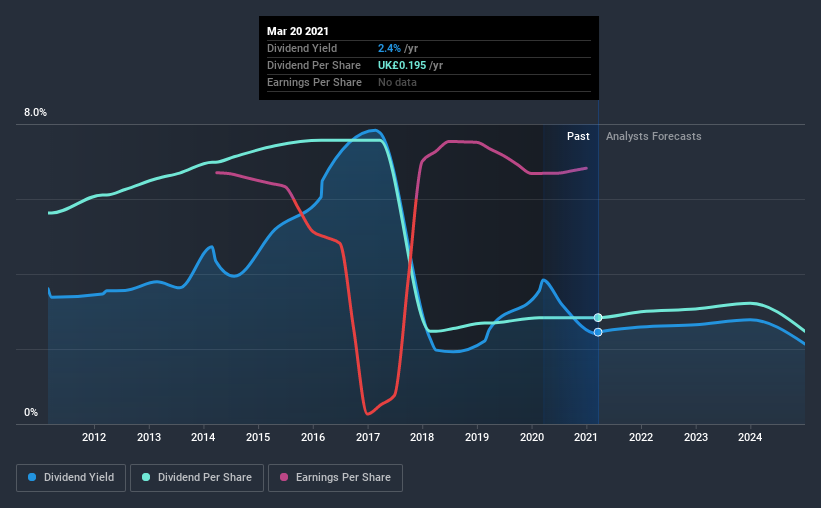There's A Lot To Like About Pearson's (LON:PSON) Upcoming UK£0.14 Dividend
Some investors rely on dividends for growing their wealth, and if you're one of those dividend sleuths, you might be intrigued to know that Pearson plc (LON:PSON) is about to go ex-dividend in just three days. This means that investors who purchase shares on or after the 25th of March will not receive the dividend, which will be paid on the 7th of May.
Pearson's next dividend payment will be UK£0.14 per share, and in the last 12 months, the company paid a total of UK£0.20 per share. Last year's total dividend payments show that Pearson has a trailing yield of 2.4% on the current share price of £7.962. Dividends are a major contributor to investment returns for long term holders, but only if the dividend continues to be paid. So we need to investigate whether Pearson can afford its dividend, and if the dividend could grow.
See our latest analysis for Pearson
Dividends are typically paid from company earnings. If a company pays more in dividends than it earned in profit, then the dividend could be unsustainable. That's why it's good to see Pearson paying out a modest 48% of its earnings. A useful secondary check can be to evaluate whether Pearson generated enough free cash flow to afford its dividend. It paid out more than half (57%) of its free cash flow in the past year, which is within an average range for most companies.
It's encouraging to see that the dividend is covered by both profit and cash flow. This generally suggests the dividend is sustainable, as long as earnings don't drop precipitously.
Click here to see the company's payout ratio, plus analyst estimates of its future dividends.
Have Earnings And Dividends Been Growing?
Stocks in companies that generate sustainable earnings growth often make the best dividend prospects, as it is easier to lift the dividend when earnings are rising. If business enters a downturn and the dividend is cut, the company could see its value fall precipitously. It's encouraging to see Pearson has grown its earnings rapidly, up 52% a year for the past five years.
The main way most investors will assess a company's dividend prospects is by checking the historical rate of dividend growth. Pearson has seen its dividend decline 6.6% per annum on average over the past 10 years, which is not great to see. It's unusual to see earnings per share increasing at the same time as dividends per share have been in decline. We'd hope it's because the company is reinvesting heavily in its business, but it could also suggest business is lumpy.
To Sum It Up
Should investors buy Pearson for the upcoming dividend? From a dividend perspective, we're encouraged to see that earnings per share have been growing, the company is paying out less than half of its earnings, and a bit over half its free cash flow. Overall we think this is an attractive combination and worthy of further research.
While it's tempting to invest in Pearson for the dividends alone, you should always be mindful of the risks involved. To help with this, we've discovered 2 warning signs for Pearson that you should be aware of before investing in their shares.
A common investment mistake is buying the first interesting stock you see. Here you can find a list of promising dividend stocks with a greater than 2% yield and an upcoming dividend.
This article by Simply Wall St is general in nature. It does not constitute a recommendation to buy or sell any stock, and does not take account of your objectives, or your financial situation. We aim to bring you long-term focused analysis driven by fundamental data. Note that our analysis may not factor in the latest price-sensitive company announcements or qualitative material. Simply Wall St has no position in any stocks mentioned.
Have feedback on this article? Concerned about the content? Get in touch with us directly. Alternatively, email editorial-team (at) simplywallst.com.

 Yahoo Finance
Yahoo Finance 
